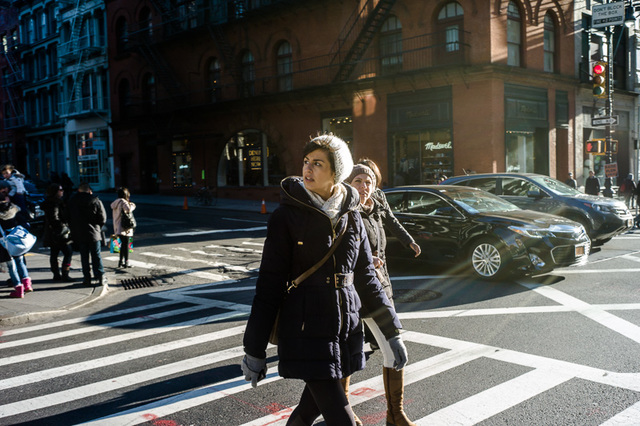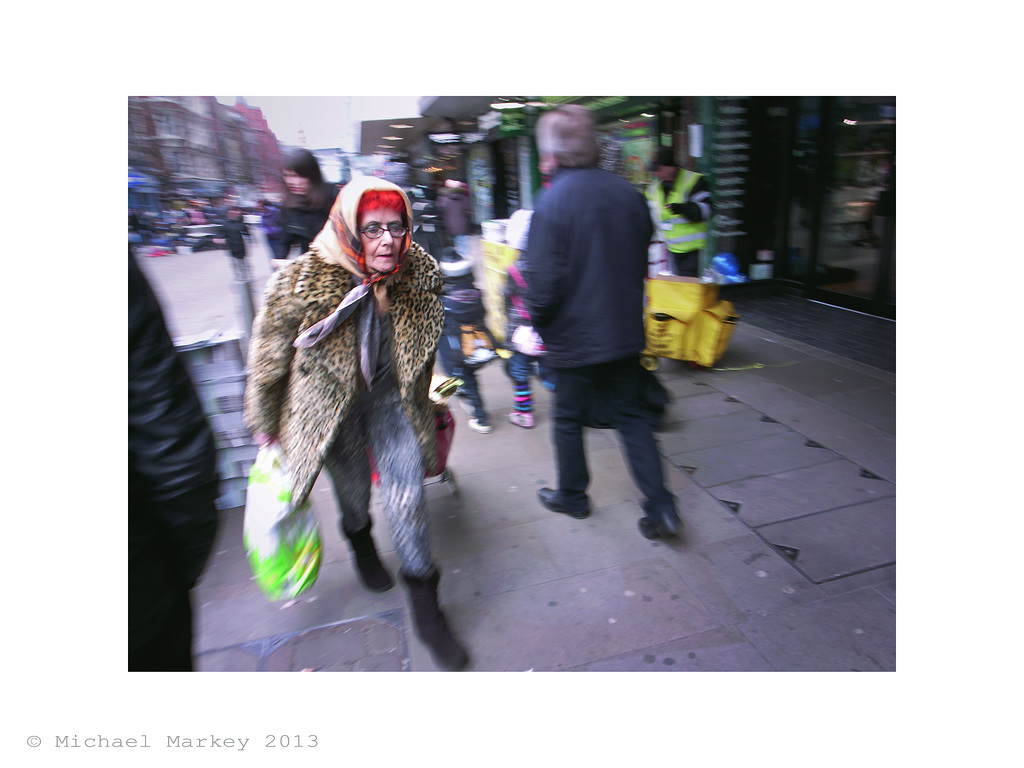Sparrow
Veteran
yes, Simon ...
yes, exactly ... this is the learning to read bit, not the writing War and Peace
yes, Simon ...



The left-right thing... That's European cultural influence, stemming from how we read and write from left to right. It's so ingrained that we have a visual preference and expectation for that direction. Anything going right-left is moving against our cultural grain and feels awkward, creating tension not harmony.
Asian cultures that write and read right-left have the opposite preference (albeit diluted through the modern era's worldwide familiarity with European culture).
If you crop the feet of moving people on a street shot or any photograph that wants to convey a sense of motion, you destroy the sense of motion... Its like photographing a moving car without its tires.
Not some art school teaching but basic photography.
So no matter how you 'flip' that image of the women crossing the street, its not going to 'work' because they're in motion and the photograph has not captured that motion.
The left-right thing... That's European cultural influence, stemming from how we read and write from left to right. It's so ingrained that we have a visual preference and expectation for that direction. Anything going right-left is moving against our cultural grain and feels awkward, creating tension not harmony.
Asian cultures that write and read right-left have the opposite preference (albeit diluted through the modern era's worldwide familiarity with European culture).
If you crop the feet of moving people on a street shot or any photograph that wants to convey a sense of motion, you destroy the sense of motion... Its like photographing a moving car without its tires.
Not some art school teaching but basic photography.
So no matter how you 'flip' that image of the women crossing the street, its not going to 'work' because they're in motion and the photograph has not captured that motion.
Well, there's the rub...!... but how much of the rest of it is cultural? ... greeks shake their heads to say yes, how wrong is that?
Well, there's the rub...!
All great examples of why rules aren't the answer.
I understand your sentiment entirely. But there is good and bad composition: inasmuch as cultural norms and hardwired biological reasons dictate what we find interesting and harmonious in a picture. Whether or not you like the idea, there are certain arrangements in pictures that are deemed "good".I dislike the term, composition. Maybe it's just me but it seems to carry with it the idea that there is inherently "Good" composition and "Bad"...In the sense that you could have some arrangement of abstract stuff deemed "Good", on which you could hang the subject of your choice (like an armature) and have a good photograph.

